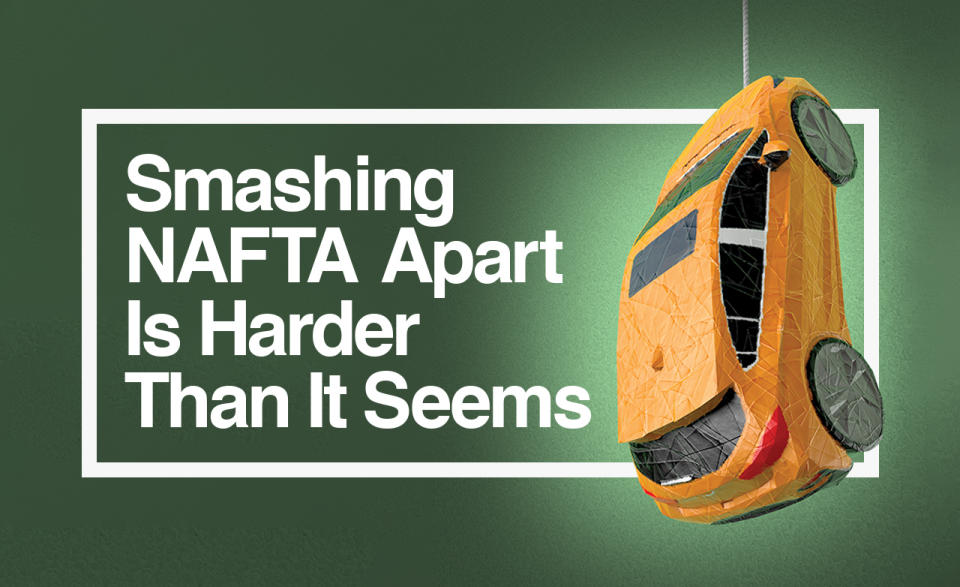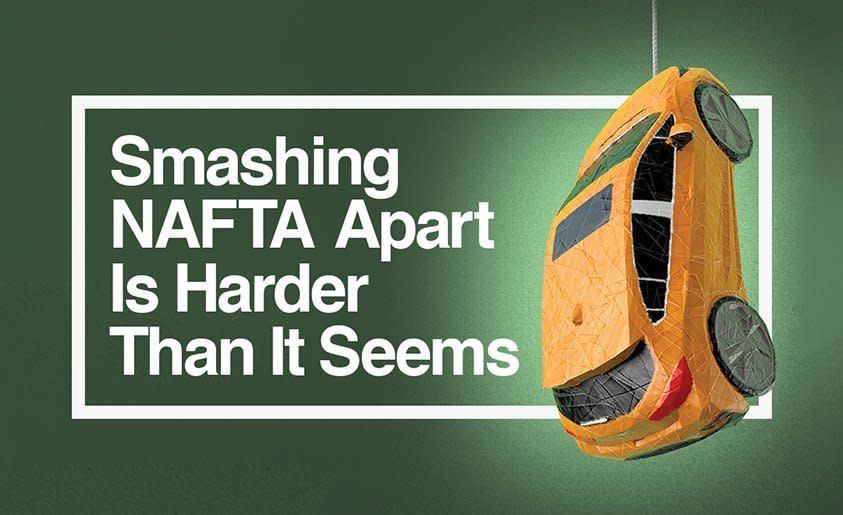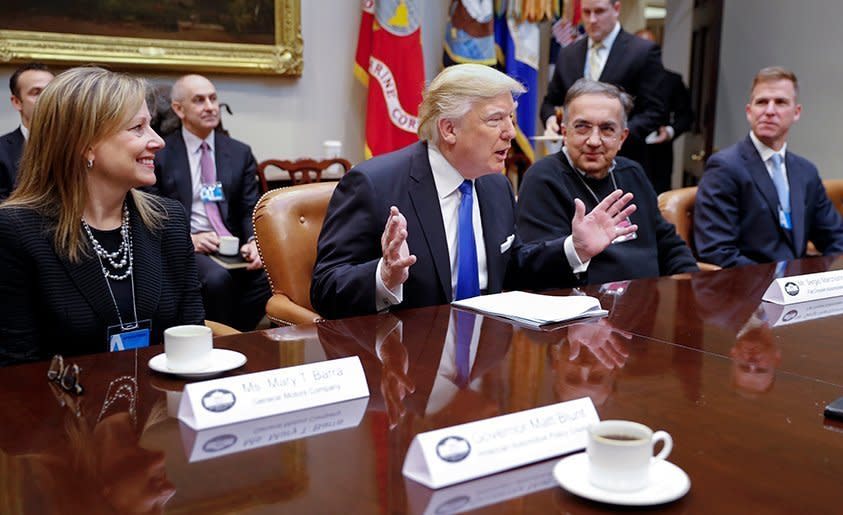Smashing NAFTA Is Harder Than It Seems, Especially When You're Blindfolded


From the May 2017 issue
The tweet from the President-elect came early in the morning, 7:30 a.m., on the first business day of the new year: “General Motors is sending Mexican made model of Chevy Cruze to U.S. car dealers-tax free across border. Make in U.S.A. or pay big border tax.”
Compared with other corporate bullying from the most powerful Twitter account on the planet, this one seemed relatively tame. GM is just one of 10 carmakers, including each of the top eight, that assemble vehicles in Mexico destined for dealership lots north of the Rio Grande. The company responded the same day, issuing a similarly brief statement pointing out that it also builds the Cruze here. “All Chevrolet Cruze sedans sold in the U.S. are built in GM’s assembly plant in Lordstown, Ohio,” it read. “GM builds the Chevrolet Cruze hatchback for global markets in Mexico, with a small number sold in the U.S.”
What GM didn’t mention is that Lordstown would be dropping a production shift, a byproduct of demand moving from sedans to crossovers. Cutting back from three shifts to two resulted in layoffs later in the month. And even though all the Cruze sedans it is currently producing for the U.S. are coming from Ohio, within the past year GM has imported some sedans from its plant in Ramos Arizpe, Mexico.
Of course, finding nuance in a press release is as likely as expressing it in 140 characters. Last year, GM delivered 188,876 Cruzes in the U.S., and this year it expects the Mexico-made hatchbacks to account for about 15 percent of sales. The Cruze is the company’s second-best-selling car here and one of GM’s truly global models; plants in Argentina, China, and Korea also build the Cruze. And it offers good evidence of why unraveling the North American Free Trade Agreement after 23 years would prove challenging for the U.S. auto industry.
Economists all but unanimously agree that NAFTA benefits the United States. In a 2012 University of Chicago Booth School of Business survey of dozens of top economists, not one respondent disagreed with the statement that “citizens of the U.S. have been better off with the North American Free Trade Agreement.” The domestic auto industry most certainly has.

Honda's plant in Celaya, Mexico, opened in 2014. Toyota is now constructing its own plant down the street, like a Burger King to Honda’s McDonald's.
U.S. auto plants operated at 94 percent capacity in 2016, meaning that automakers would be unable to move production here in the short term. Rather, some Mexico-made cars would likely just disappear from our market. GM says that the cost of tooling needed for Cruze hatchback production at Lordstown is not justified by demand for that body style. So no NAFTA would likely mean no hatchback Cruze in the U.S. Also, GM potentially would need to charge higher prices for the Ohio-built sedan if its Mexico-made parts can no longer be imported tariff-free.
In that case, GM might turn to Asia in search of low-cost components. This would have negative consequences for American manufacturers, as it would dramatically reduce the U.S. content of those parts. Chinese goods, for example, generally have one-tenth the U.S. content of those from Mexico. Carmakers that opt to shift production from Mexico elsewhere would also likely target another low-wage country such as China.
America Last: On the Futility of American Carmakers Selling in Japan
Such a move could play out like Honda’s migration of the Fit to Mexico, but in reverse. Honda opened its plant in Celaya, Mexico, to produce Fits for North America in 2014. In 2011, high demand in North America and a strong yen led the company to start sourcing Canadian models from its Chinese plant in Guangzhou rather than Japan.
There is another course of action, one that the notoriously slow-to-change auto industry may just choose by default: Wait. Political winds change. And in the meantime, automakers will continue to lobby Washington. To that end, GM’s Barra met with President Trump again in early February, at which time he proclaimed, “I learned a lot about the automobile business.” No doubt, then, that he now understands that a model cycle lasts longer than a presidential term.

 Yahoo Autos
Yahoo Autos 